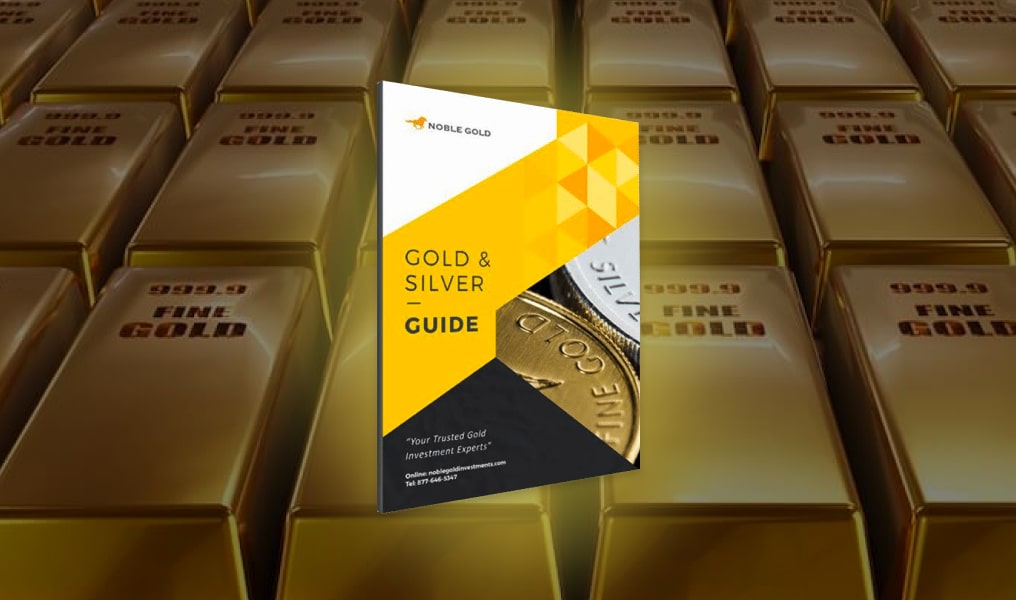If you’re an investor with retirement accounts, you’ve probably heard the term Required Minimum Distributions (RMDs) before. Yet, the rules surrounding RMDs can feel complex and overwhelming, leaving many unsure of how to proceed.
Understanding and managing RMDs doesn’t have to be a daunting task. With the right knowledge and guidance, you can confidently navigate this pivotal aspect of your retirement planning. Keep reading to learn how to strategically handle your RMDs so you can optimize your financial future.
What Are RMDs And Why Are They Important When You Retire?
Required Minimum Distributions (RMDs) are the annual withdrawals that investors must make from their tax-deferred retirement accounts. Under current IRS regulations, you’re required to take these annual withdrawals by April 1 of the year after you turn 72. For example, if you turn 72 in June 2023, you have until April 1, 2024, to take your first RMD.
Why Required Minimum Distributions Are Important
RMDs ensure systematic withdrawal and taxation of your accumulated retirement assets. This process provides a predictable income stream during your retirement years. It also prevents these tax-deferred accounts from hoarding assets indefinitely, which isn’t their true function.
By spreading out withdrawals over a longer period of time, you extend the life of your tax-deferred retirement account. This is particularly beneficial for preserving your assets, especially if you anticipate a long retirement.
A larger portion of your money remains invested over a longer period, potentially allowing your retirement funds to grow and compound over time. Essentially, RMDs serve as a structured plan to make your retirement savings sustainable and tax-efficient.
Factors That Affect RMD Calculation
Several key factors can affect how much your required minimum distribution withdrawals are. These include:
- Current age: The IRS uses life expectancy tables to calculate RMDs. Your age is directly related to the amount of your RMDs because they’re based on an individual’s current age and account balance.
- Account balance: The calculation also takes into account the account balance at the end of the previous year. A higher account balance means a higher RMD.
- Life expectancy tables: The IRS divides the balance of tax-deferred retirement accounts by a number based on life expectancy to calculate RMDs.
- Retirement account type: Different retirement accounts have different rules for calculating and withdrawing RMDs, affecting their amounts.
Calculating Your Required Minimum Distribution Amount
Understanding how to calculate your Required Minimum Distribution (RMD) for effective retirement planning. Here’s a step-by-step guide on how to determine your RMD:
- Determine your account balance: Your RMD is based on the balance in your retirement account as of the end of the previous year.
- Find your distribution period: The IRS provides life expectancy tables to help you calculate your RMD. The most commonly used is the Uniform Lifetime Table, but if your spouse is the sole beneficiary and more than ten years younger than you, you will use the Joint Life and Last Survivor Expectancy Table.
- Divide your account balance by your distribution period: Take your account balance and divide it by the distribution period from the IRS table. This calculation gives you your RMD for the year.
For example, if you’re 72 and your account balance at the end of the previous year was $500,000, your distribution period from the Uniform Lifetime Table is 25.6 years. So, you would divide $500,000 by 25.6, which equals $19,531.25. That’s your RMD for the year. Keep in mind that each of your retirement accounts may have different RMDs, so you’ll need to calculate the RMD for each account separately.
Strategies For Lowering Your RMD
For some investors, beginning required withdrawals at 72 might work just fine. However, for others, especially those who want to extend their savings or continue investing, the thought of mandatory withdrawals may not sound appealing. If you find yourself in this latter group, there are some tactics that can push these mandatory withdrawals to a later date, providing a strategic approach to extending your retirement savings.
Qualified Charitable Distributions (QCDs)
Qualified Charitable Distributions involve directly transferring funds from your IRA custodian to a qualified charity. These distributions can count toward meeting your minimum distribution requirement.
The beauty of this approach is that you meet the minimum distribution requirement and don’t have to pay tax on the amount distributed because it doesn’t count toward taxable income. QCDs help lower your adjusted gross income (AGI), potentially keeping you in a lower tax bracket while supporting things that are important to you.
Roth Conversions
Converting your traditional IRA to a Roth IRA involves taking a distribution from your original IRA, paying the required income taxes, and then transferring those funds to a Roth IRA. Once the money is in the Roth IRA, it can continue to grow tax-free, and any qualified withdrawals you make in the future will also be tax-free.
Since Roth IRAs don’t have RMDs, the funds can remain in the account and potentially grow and compound tax-free for the rest of the owner’s life. This can be a great way to increase the value of your retirement savings and potentially leave a tax-free legacy to your heirs.
Switching Your Retirement Plan To A 401(k)
401(k) plans have a unique advantage regarding RMDs. Unlike traditional IRAs, which require you to start RMDs at age 72 regardless of your employment status, 401(k) plans allow you to defer your RMDs until you retire. This is often referred to as the “still working” exception. However, it’s important to note that this exception only applies if you don’t own more than 5% of the company you work for.
By taking advantage of this rule, you can reduce the amount you have to deduct and, therefore, the amount of taxable income you have to report each year. This can be especially beneficial if you expect to fall into a lower tax bracket in the future.
Invest In A Qualified Longevity Annuity Contract (QLAC)
Qualified Longevity Annuity Contracts (QLACs) are a unique financial vehicle for managing retirement savings and RMDs. A QLAC is a type of deferred income annuity that allows you to invest a portion of your savings for retirement to generate a future income stream.
You can invest up to $135,000 or a maximum of 25% of your retirement account in a QLAC, whichever is less. Income payments from a QLAC do not begin immediately but are deferred, often until a much later age, up to age 85. This delay allows for potentially higher payments when they begin because they’re spread out over a shorter period.
One of the key benefits of investing in a QLAC is the impact on the RMD calculation. The amount you invest in a QLAC is excluded from the account balance used to calculate your RMDs. This can effectively lower your RMDs, reducing the amount of taxable income you must report each year once you start receiving RMDs.
However, knowing that the income you ultimately receive from the QLAC is taxable is important. Therefore, with a QLAC, you can defer a portion of your RMDs and the taxes due on them until later.
Penalties For Not Taking RMDs
Previously, if you missed your RMD or didn’t withdraw the full amount required, you’d be hit with a hefty 50% tax penalty. However, after the government passed the Secure 2.0 Act in 2023, instead of a 50% penalty, you’re now looking at a 25% tax on the amount you didn’t withdraw – a significant relief but still a significant chunk of your savings.
However, there’s a provision that provides further leniency if you promptly make up the omission. If you make up the missed withdrawals quickly, the penalty can be reduced even further to as low as 10%. This quick response can help ensure that an oversight doesn’t significantly impact your hard-earned nest egg.
Special Rules For Inherited Accounts
When you inherit retirement accounts, different rules apply for required minimum distributions depending on your relationship to the original account owner and the type of retirement account.
RMDs For Spouse Beneficiaries
Inheriting an IRA or other retirement accounts as the original owner’s spouse provides you with multiple options, each with its own implications for required minimum distributions. These include:
Option 1: Treat the IRA as yours, where you essentially take ownership of the account, and it’s as if the IRA has always belonged to you. All distributions are based on your own life expectancy. This means that if you are under 72, the age at which withdrawals typically begin, you can defer distributions until you reach that age. With this option, the account has more time to grow tax-free.
Option 2: Another option is to transfer the inherited assets to your own retirement account. The RMD rules would then follow the guidelines of your retirement account. Similar to treating the IRA as your own, the RMDs would begin when you turn 72, allowing for further tax-deferred growth if you are under 72.
Option 3: If you choose to remain a beneficiary rather than become an owner, RMDs will begin when the original owner turns 72. However, if the original owner had already turned 72 and started taking RMDs, you would continue to take them on the original schedule. In some cases where the original owner had not yet turned 72, you may need to begin taking distributions immediately.
RMDs For Non-Spouse Beneficiaries
For accounts inherited from original owners who died in 2020 or later, non-spousal beneficiaries generally have a 10-year window to fully deplete the account – known as the “10-year rule.” Under this rule, there are no specific annual RMDs, allowing you to withdraw as much or as little as you want each year.
However, at the end of the 10th year, the entire balance of the inherited retirement account must be paid out. If you inherit an IRA in 2023, you must ensure the whole balance is withdrawn by December 31, 2033.
While this rule provides flexibility in the timing of distributions, it also accelerates the lapse of the inherited retirement account. This could result in larger distributions affecting your taxable income and potentially putting you in a higher tax bracket.
Diversify Your Retirement Portfolio With Precious Metals
When you’re looking forward to enjoying your golden years, diversifying your retirement portfolio is key. Precious metals offer a timeless and valuable addition to any portfolio, and with SpaceXgold, you can tap into the enduring value of gold, silver, platinum, and palladium. We offer physical bars and coins you can purchase to store at home or invest directly into a precious metals IRA.
Gold and other precious metals have historically held their value and even thrived in times of economic uncertainty. A precious metals IRA can offer a tax-advantaged way to incorporate these valuable assets into your retirement planning. When you invest with us, you get the added benefit of industry-leading expertise and personalized service to guide you through the process.
Don’t wait any longer. Give us a call at ., or click here to open an account, and let us help you navigate the world of precious metals investing.






